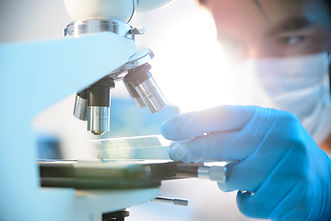


Available Technologies
RESEARCH / DIAGNOSTIC TOOLS
(for more information, click title to open PDF file)
A-57 Ultra-Stable, High Speed Single Living Cells Separation System
Recent progress in biotechnology and nano-technology has enabled single cell sorting. To analyze these single cell characteristics, it is necessary to isolate a single cell from the original population to eliminate influences of other cells.
A-58 On-Chip Pumps Achieve High-accuracy, Ultra-high-speed Sorting of a Single Cell
To sort a single cell with high speed, high accuracy and high viability, the researchers developed a single cell sorting device by utilizing on-chip pump at ultra-high-speed.
A-59 Novel Biomarkers and Agents to Screen Molecular-Targeted Therapeutics for Peritoneal Metastasis from Gastric Cancer
NU Researchers identified Synaptotagmin VIII (SYT8) as a candidate biomarker specific to peritoneal metastasis.
A-60 Novel Biomarkers and Agents to Screen Molecular-Targeted Therapeutics for Hepatic Metastasis from Gastric Cancer
Nagoya University researchers conducted transcriptome analysis using a next-generation sequencing platform and identified major facilitator superfamily domain containing 4 (MFSD4) as a candidate biomarker for hepatic metastasis of GC.
A-61 Antibody that Inhibits Wnt Signal Activation Pathway
Although it is known that ADAM family proteases cause the severe bleeding from haemorrhagic snake venom, the detailed mechanism of the haemorrhage is unclear. Researchers at Nagoya University have found that the target of ADAM proteases is a Wnt/β-catenin signal receptor, LRP5/6 which controls cell differentiation and proliferation.
A-65 Method for Preparing Genetically-Modified T Cells Which Express Chimeric Antigen Receptor
The research team at Nagoya University has improved the large-scale T cell culture method and achieved the highest introduction efficiency in a non-viral system; over 50%, by mixing and co-culturing Genetically-modified T Cells with activated T Cells that were separately prepared.
B-28 Novel Fluorescent Compounds that Distinguish DNA and RNA
Nagoya University researchers have succeeded in developing novel fluorescent compounds that allow users to overcome all current fluorescent dye problems. These novel compounds can be used to stain living cells well (< 500 MW) without any damage using low energy wavelength excitation (561 nm) and they are applicable to the two-photon excitation microscopy assay.
B-30 Photoresistant Fluorescent Dyes for Bioimaging
Researchers at Nagoya University have developed novel fluorescent dyes, based on a benzophosphole scaffold.
B-33 Water Film Device for Continuous Particulate Matter Collection
Nagoya University researchers have developed a continuous PM2.5 collection system from aerosol using a water film within the device. The water film is formed by a superhydrophilic surface and enables the collection of PM2.5 from gas phase.



